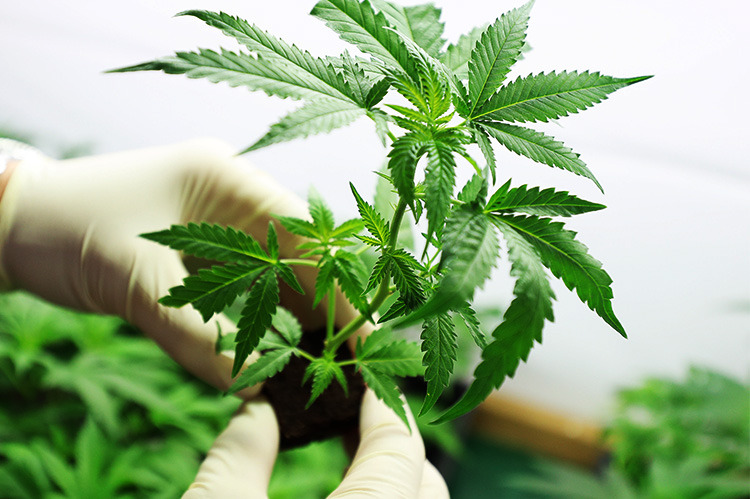Legalization of Marijuana
Over the years, marijuana use has become increasingly destigmatized, especially in Canada. With the introduction of the Cannabis Act and Bill C-45, the legalization of marijuana may happen sooner than many anticipated.
Marijuana, which boasts its own vernacular, is also known as weed, whackatabacky, pot, reefer, grass, dope, ganja and Mary Jane, to name a few. Users smoke a spliff, torch a bong and burn their fingers on a roach. In fact, in the Rastafarian culture, cannabis is treated like a venerated religion.
Public fear around cannabis is highly evident in the 1936 propaganda movie Reefer Madness, which shows marijuana users committing depraved acts while under the drug’s influence and its psychosis and hallucinations from by-products. By the 1960s, however, cannabis was celebrated by hippies as the metaphor for rebellion, and Reefer Madness became a cult proclamation on all that was wrong with “The Establishment.”
Conversely, over the last few decades, marijuana usage has been greatly destigmatized, with Canadians being some of the highest users in the world. In 2015, 21 per cent of youth and 30 per cent of young adults reported using cannabis within the last year. In 2016, Canadians were charged with close to 55,000 cannabis-related offences, with approximately 23,000 charges laid, 76 per cent of them for cannabis possession. (Sources: Government of Canada).
So what exactly does the Cannabis Act entail, and what does it mean to both law- abiding citizens who might try marijuana once it is legalized, as well as those who are already using pot on a regular basis?
Bill C-45, which applies to Canadian adults 19 years of age and older (18 years of age and older in Alberta and Quebec), allows for the purchase of fresh or dried cannabis, cannabis oil, plants and seeds for cultivation from either a provincially or territorially regulated retailer, or where this option is not available, directly from a federally licensed producer; possession of up to 30 grams of dried legal cannabis or the equivalent in public; the right to share up to 30 grams or the equivalent of legal cannabis and legal cannabis products with other adults; the right to cultivate up to four plants in a household; and the right to alter cannabis at home in order to prepare varying types of cannabis products (e.g., edibles) for personal use, provided that no dangerous organic solvents are used in the process. (Source: Government of Canada).
What the public should be aware of, however, is that there are clear and strict parameters attached to Bill C-45, ones that carry penalties at a criminal level if the terms/quantities are violated. An adult carrying more than 30 grams of dried cannabis or the equivalent, but 50 grams or less of dried cannabis or the equivalent, could be subject to a $200 fine, with no criminal record. Those in possession of greater quantities could face criminal prosecution and sentencing. With one of the main purposes of Bill C-45 legislation being the prevention of young peoples’ access to cannabis, stiff penalties for anyone providing marijuana to those 17 years of age or under could result in a 14-year prison term. Selling liquor to a minor carries a maximum $10,000 fine. Purchasing cannabis products from non-regulated stores, or if not grown legally, are also indictable offences. And those selling cannabis must have a licence; failure to have one could result in penalties of up to 14 years. (Sources: Government of Canada).
York Region police chief, Eric Jolliffe, says he struggles with some of the observations he hears around the pros of Bill C-45, including the comment that the legalization of marijuana will keep it out of the hands of children, and that said legalization will also have a devastating effect on organized crime. “The marijuana business, as controlled by organized crime, is a $6-billion operation,” Jolliffe says. “We know that black market entrepreneurs will alter content to make the product more entertaining. I wonder if those who buy from a seller would change their pattern of behaviour if there were a store open down the street.”
Additional concerns that Jolliffe has centre around the cost factors and the readiness of police services to implement the legislation. “We are still waiting for the legislation to see what we need to provide members with around training, to make sure we do it right. We need to figure out the appropriate response; we do not want to violate anyone’s Charter of Rights,” Jolliffe says. One-day training for York Region Police’s 1,600 staff members is approximately $800,000 in labour costs.
In addition to Bill C-45 and Bill C-46, which deals with offences and procedures relating to drug-impaired driving, police will also have to be educated on the specifics of the provincial Cannabis Act.
“In 2016, Canadians were charged with close to 55,000 cannabis-related offences, with approximately 23,000 charges laid, 76 per cent of them for cannabis possession”
Jean-François Crépault, senior policy analyst, Communications and Partnerships, at the Centre for Addiction and Mental Health (CAMH), states that prohibition is not working when it comes to cannabis. And in fact, for most adults, when used in moderation, the risks are certainly lower than those associated with alcohol. Crépault also says that “where marijuana has been legalized or decriminalized, studies show an initial spike in usage, referred to as the ‘Straw Fire’ effect. It was found that once the initial curiosity was satisfied, the spike fizzled out, with the overall rate returning to prelegalization.”
In order to mitigate the risks associated with cannabis, CAMH’s Dr. Benedikt Fischer and Dr. Jürgen Rehm developed a set of Lower-Risk Cannabis Use Guidelines (LRCUG) advising delayed cannabis use until early adulthood, avoidance of frequent (daily) use and using vapourizers, rather than smoking it. People with a personal or family history of psychosis were also advised to avoid usage or use a product with lower tetrahydrocannabinol (commonly known as THC) content. And while CAMH is focused on harm reduction, Crépault states: “We need to recognize that there is no good reason, as far as consumption in public is concerned, to regulate cannabis more harshly than we regulate tobacco.”
The opinions of the “Prince and Princess of Pot,” Marc Emery and his wife, Jodie, Canadian cannabis rights activists, are unsurprisingly at polar opposites of law enforcement. The couple, who have spent millions of dollars championing cannabis legalization, pleaded guilty in December 2017 to possession of marijuana for the purpose of trafficking and possession of proceeds of crime more than $5,000. They were each fined $150,000, along with a $45,000 impact statement and two years’ probation.
For Jodie, relaxing with a joint is preventative health care reducing her stress and improving her health. “Cannabis should not be demonized,” she says. “I use it for recreation and medicine, and for a personal/spiritual connection. There should be no limits on personal cannabis, just as there are no limits on personal alcohol. Possession of 30 grams is not a lot of cannabis for the vast majority of consumers. There’s no harm in having two ounces or more [28 grams is considered one ounce]. These laws are only being made to appease the opponents and anti-cannabis politicians involved.”
“With one of the main purposes of Bill C-45 legislation being the prevention of young peoples’ access to cannabis, stiff penalties for anyone providing marijuana to those 17 years of age or under could result in a 14-year prison term. Selling liquor to a minor carries a maximum $10,000 fine”
The impact of legalization affects many sectors of the public and in a variety of ways. T.J., a cannabis smoker for the past 16 years, feels that not only will users be under more scrutiny with cannabis legalization, but they could also be falsely compared to new smokers, who behave in an inappropriate manner. “The cost factor is also a consideration,” T.J. says. “Right now, medical marijuana goes for $9 to $12 a gram, dependent on strength. At $10 a gram, a ‘legal’ ounce will cost $316 with taxes. On the street, an ounce costs $225.”
Interestingly, in the Yukon, the minister in charge of marijuana is strategically pricing a legal gram of cannabis at $8, in the hope of displacing some of the illegal market.
As far as first-time users are concerned, Karl Thomas, director, Organized Crime Enforcement Bureau, Ontario Provincial Police, says, “I think we will have an uptick in users who will try it; I hope those trying it for the first time will use the retail [or] legal model. With the illegal market, you don’t know what you are buying; it could be laced with other drugs. It is also important that people are aware of the impact it will have on them, especially relative to driving after consumption.”
Another factor to consider, in particular with Bill C-46, is the fact that marijuana can stay in a person’s bloodstream up to seven days (or more). If a person smokes a joint the night before or even several nights before, positive results can show up on roadside or employer drug tests (i.e., at the Pickering Nuclear Generating Station or the Toronto Transit Commission, for example). Also, landlords who do not want renters growing marijuana, albeit legally, in their units will have to add a “no-grow” policy to their rental agreements. Homes with indoor grow-ops have to declare this fact when selling their homes, with the mould factor being a significant concern.
As of January 2018, nine U.S. states have legalized marijuana for recreational use, including Colorado, Washington, Alaska, California, Maine, Massachusetts, Nevada, Vermont and Oregon, as well as Washington, D.C. Findings in a September 2015 report entitled The Legalization of Marijuana in Colorado: The Impact states: “In 2014, when retail marijuana businesses began operating, there was a 32 percent increase in marijuana-related traffic deaths in just one year from 2013.”
When Jolliffe and Thomas were asked their thoughts on the pros of Bill C-45, both had similar answers: “Only time will tell.”
“We can’t treat the legal purchasing of cannabis or legal growing any different than alcohol,” Thomas adds. “It is really important that police keep in mind that, one: cannabis is legal; and two: we have to see the impact it is going to have on policing. We have talked to our counterparts in law enforcement in the U.S., but Canada is a different society.”














































































No Comment